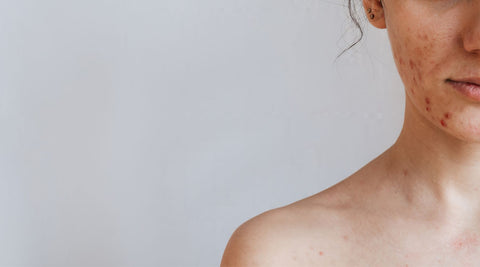What you need to know about oral sun protection and the new-age “supplemental sunscreen.”
You’ve probably been told to wear sunscreen. Every day. Rain or shine. Indoors or out. And yes, topical SPF is non-negotiable.
But what if you could give your skin an extra layer of defense from the inside out?
No, we’re not talking about skipping sunscreen. We’re talking about strengthening your skin’s natural ability to handle sun stress, with a very unexpected ally: the pearl tomato.
What Makes Sun Exposure So Damaging Anyway?
We often think of sun exposure as just “burn” or “tan,” but UV rays, especially UVA and UVB - cause far more beneath the surface:
- DNA damage in skin cells
- Breakdown of collagen and elastin (hello, wrinkles)
- Increased inflammation and pigmentation
- Higher risk of skin cancer over time
Even small amounts of daily sun exposure, while commuting, sitting by a window, or taking a walk, add up over time.
That’s why photoprotection isn’t just cosmetic. It’s biological.
Where Do Tomatoes Come In?
Not just any tomato.
Pearl tomato, a specific white tomato extract, is rich in something called colorless carotenoids: namely, phytoene and phytofluene.
Unlike their colorful cousins (like beta-carotene or lycopene), these compounds are invisible to the eye but powerful in their action. They absorb UVA and UVB rays, act as antioxidants, and reduce the inflammation that accelerates pigmentation and ageing.
What the Science Says
1. Photoprotection
Studies suggest that daily intake of pearl tomato extract may increase the skin’s natural resistance to UV-induced damage, essentially raising your minimal erythema dose (the threshold before you burn).
2. Melanin Regulation
It can reduce UV-triggered melanin production, helping prevent uneven skin tone, dark spots, and melasma flare-ups over time.
3. Antioxidant Defense
By neutralizing free radicals generated by sun exposure, colorless carotenoids help protect skin cells, collagen, and DNA.
In some models, phytoene and phytofluene have been shown to inhibit tyrosinase (the enzyme that drives pigment production) more effectively than kojic acid.
How It’s Different from Sunscreen
Topical SPF sits on the surface of your skin and blocks or scatters UV rays. It’s essential, but it has limitations:
- You need to reapply every 2–3 hours
- It rubs off with sweat or water
- It often misses spots (ears, hairline, eyelids)
Oral sun protection doesn’t replace SPF, but it works underneath it. It supports your skin from within by:
- Reducing the depth of UV penetration
- Decreasing the inflammatory response
- Preventing the oxidative stress that leads to damage over time
Think of it like a second shield: not instead of, but in addition to, sunscreen.
Is It Safe?
Yes. Pearl tomato extract has undergone patch testing, safety trials, and is well tolerated across skin types and tones. It’s also free from the concerns surrounding unregulated “whitening agents” or glutathione IVs often marketed for sun damage in less responsible ways.
Who Is It For?
This kind of internal photoprotection is especially useful for:
- People prone to sun sensitivity, redness, or post-inflammatory hyperpigmentation
- Anyone with melasma or pigmentation-prone skin
- Those who are diligent with SPF but want added protection (travel, high altitude, outdoor sports)
- Individuals looking for glow without the burn
So, Can a Tomato Really Help?
Yes. Though, pearl tomato (or any ingredient for that matter) doesn't give you license to skip sunscreen, it helps your skin cope better when real life gets in the way.
Because sun exposure is inevitable. But sun damage doesn’t have to be.
References
- Grether-Beck S, et al. (2021). Oral use of carotenoids and polyphenols for skin health—A review. Nutrients, 13(9), 3021.
https://doi.org/10.3390/nu13093021 - Stahl W, Heinrich U, Jungmann H, Sies H, Tronnier H. (2000). Carotenoids and protection against solar UV radiation. Am J Clin Nutr, 71(2), 795S–798S.
https://doi.org/10.1093/ajcn/71.2.795s - Palombo P, et al. (2012). Clinical and instrumental evaluation of skin photoprotective and anti-aging effects of a dietary supplement containing carotenoids. Clin Cosmet Investig Dermatol, 5, 147–153.
https://doi.org/10.2147/CCID.S33242 - Sies H, Stahl W. (2004). Nutritional protection against skin damage from sunlight. Annu Rev Nutr, 24, 173–200.
https://doi.org/10.1146/annurev.nutr.24.012003.132320 - Esmarch D, et al. (2020). Phytoene and phytofluene – Emerging colorless carotenoids in human skin and health. J Nutr Sci, 9, e52.
https://doi.org/10.1017/jns.2020.47



